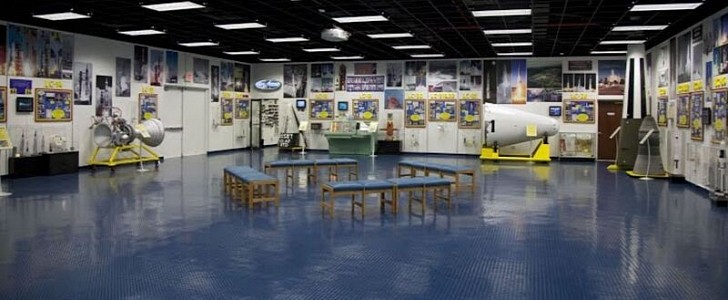It should be more or less a given that the important bits and pieces of tech from the early days of the Space Race should be well preserved and well celebrated. But as it happens, it took the dedication of a particular history appreciating higher up in the U.S. Air Force for the space program to come to the same realization.
This man was Major General Harry J. 'Bud' Sands Jr. A truck driver turned C-47 Skytrain pilot during the Second World War who rose through the ranks to be a prominent figure in USAF top brass during the early American space program. At a time when the bulk of it was little more than converted intercontinental ballistic missiles like the Mercury-Atlas, Mercury-Redstone, and the Titan III.
But in the years leading up to the formation of NASA in 1958, never once did anyone involved with the Air Force ballistic missile program think to preserve its achievements in rocket technology, much of which would be pivotal in landing men on the moon. That was, of course, until Major General Sands stepped in and made things right. The building was small at first. Nor is it exactly gigantic today. But the family of Major General sands still operates the facility today, so it makes up for it in charm.
In terms of telling the complete story of the Kennedy Space Center, the surrounding Cape Canaveral Air/Space Force Base, and its dozens of launch pads, no one does it better than the Sands Space History Center. For the most part, SSHC is too small to host a fleet of retired spacecraft and rockets. However, a disused North American SM-64 Navajo supersonic cruise missile displayed near the gates of Cape Canaveral Space Force Station is the first sign that you're in the right place for the museum.
In terms of neighbors, the brave little Sands Space History Center has the cream of the crop. Not only is the mysterious Cape Canaveral Space Force Station right next door, but so is a one-story building with the name SpaceX ominously displayed at its front. That's right, it's one of two SpaceX-operated control facilities from which they coordinate and conduct launches of Falcon-series rockets from Falcon's 1, 9, Heavy, and soon enough, Starship.
Staff at the museum opt for more of a small trinket and detailed scale model approach to teaching history. You'll have to pay the fee to get into the nearby Kennedy Space Center Visitor Complex to see the real deal full-sized rockets. But with vividly detailed scale rocket models, small bits and pieces from genuine flown rocket hardware, and in-depth displays detailing each and every launch pad within the KSC, Sands' totally free cost of entry makes it a must-go location for anyone visiting Cape Canaveral.
Check the gallery above if you want to see more.
But in the years leading up to the formation of NASA in 1958, never once did anyone involved with the Air Force ballistic missile program think to preserve its achievements in rocket technology, much of which would be pivotal in landing men on the moon. That was, of course, until Major General Sands stepped in and made things right. The building was small at first. Nor is it exactly gigantic today. But the family of Major General sands still operates the facility today, so it makes up for it in charm.
In terms of telling the complete story of the Kennedy Space Center, the surrounding Cape Canaveral Air/Space Force Base, and its dozens of launch pads, no one does it better than the Sands Space History Center. For the most part, SSHC is too small to host a fleet of retired spacecraft and rockets. However, a disused North American SM-64 Navajo supersonic cruise missile displayed near the gates of Cape Canaveral Space Force Station is the first sign that you're in the right place for the museum.
In terms of neighbors, the brave little Sands Space History Center has the cream of the crop. Not only is the mysterious Cape Canaveral Space Force Station right next door, but so is a one-story building with the name SpaceX ominously displayed at its front. That's right, it's one of two SpaceX-operated control facilities from which they coordinate and conduct launches of Falcon-series rockets from Falcon's 1, 9, Heavy, and soon enough, Starship.
Staff at the museum opt for more of a small trinket and detailed scale model approach to teaching history. You'll have to pay the fee to get into the nearby Kennedy Space Center Visitor Complex to see the real deal full-sized rockets. But with vividly detailed scale rocket models, small bits and pieces from genuine flown rocket hardware, and in-depth displays detailing each and every launch pad within the KSC, Sands' totally free cost of entry makes it a must-go location for anyone visiting Cape Canaveral.
Check the gallery above if you want to see more.














































